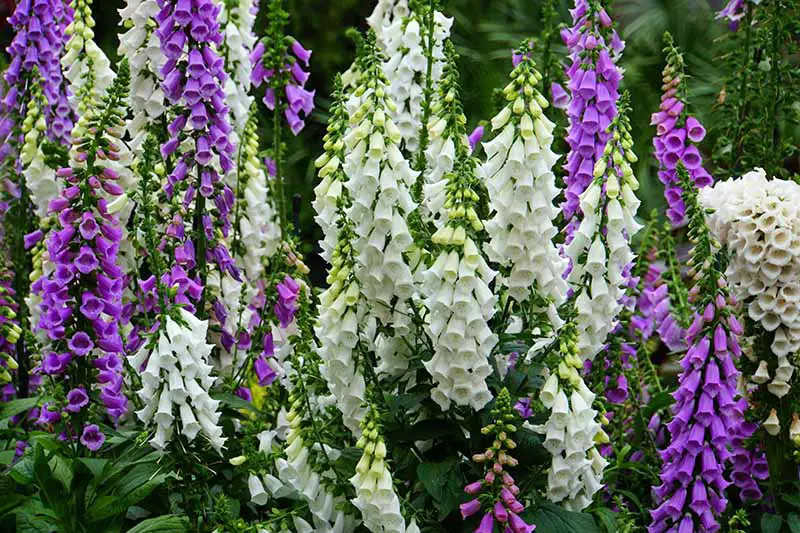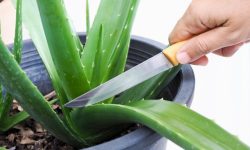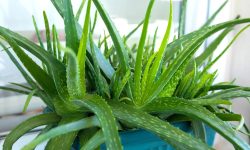Foxgloves are striking biennial or short-lived perennial plants known for their tall flower spikes and bell-shaped blooms. Their vibrant colors range from purple and pink to white and yellow, creating dramatic focal points in any garden. Many gardeners wonder how long foxgloves flower and how to maximize bloom duration. Understanding the plant’s growth cycle, environmental needs, and proper care can extend the flowering period and improve garden aesthetics.
While foxglove flowers are naturally short-lived, careful planning and maintenance can prolong their presence. Factors such as sunlight, soil quality, watering, and pest control all affect bloom longevity. Deadheading, pruning, and strategic planting also encourage multiple flowering cycles. With the right techniques, gardeners can enjoy continuous, tall, and vibrant foxglove spikes throughout the growing season. This guide provides expert tips to extend blooms and maintain healthy plants, ensuring foxglove remains a standout feature in the garden year after year.
Understanding Foxglove Growth and Blooming Patterns

Foxgloves develop from rosettes in their first year and typically produce flower spikes in their second year. This biennial cycle is essential for planning blooms. Flowering usually occurs in late spring to early summer, depending on climate and variety. Some short-lived perennials may rebloom under ideal conditions, providing additional visual interest.
Height and bloom duration vary among varieties. Taller spikes often produce more flowers but may require staking for support. The timing and longevity of flowers are influenced by temperature, sunlight, and soil fertility. Proper care ensures spikes remain upright and flowers last longer. Biennial planning is crucial; staggering plantings over multiple years can provide a continuous display. Understanding the natural growth and bloom cycle allows gardeners to predict flowering times and take steps to extend the visual appeal. Combining careful observation with strategic care maximizes bloom longevity and maintains healthy, vibrant plants.
Factors Affecting Bloom Duration
Several factors influence how long foxgloves flower. Climate plays a major role; mild temperatures and consistent moisture encourage longer bloom periods. Excessive heat or drought can shorten flower life and reduce spike quality. Soil fertility affects flower development and plant vigor. Well-draining, nutrient-rich soil promotes stronger stems and extended flowering.
Sunlight is another key factor. Foxgloves prefer partial shade to full sun depending on regional conditions. Too much shade delays flowering, while intense sun can scorch leaves and shorten blooms. Watering and humidity also affect flower longevity. Maintaining consistent moisture without waterlogging prevents stress and supports prolonged flowering. Pests and diseases can reduce bloom time if not managed early. By monitoring environmental conditions and providing proper care, gardeners can significantly extend the period during which foxgloves display their vibrant flowers. Strategic planting and attentive maintenance enhance both bloom quality and duration.
Choosing the Right Foxglove Varieties for Longer Blooming
Selecting the right foxglove varieties is key to maximizing bloom duration. Biennial foxgloves produce flowers in their second year, while short-lived perennials may rebloom under favorable conditions. Tall varieties like Digitalis purpurea ‘Excelsior Hybrids’ produce numerous flowers per spike and hold blooms longer, making them ideal for dramatic displays. Shorter varieties such as ‘Dalmatian’ or ‘Sutton’s Apricot’ are perfect for borders and containers, providing vibrant color in smaller spaces.
Flowering times vary among varieties. Some bloom earlier in late spring, while others continue into summer. Staggering varieties with different flowering periods ensures continuous garden color. Consider local climate when choosing varieties, as temperature and sunlight affect bloom timing. Varieties tolerant of partial shade or heat stress are better suited to challenging conditions, preventing premature flower drop. Selecting long-blooming types also supports pollinators, attracting bees and butterflies over an extended period. Combining multiple varieties creates layered, visually appealing garden displays. Careful selection of foxglove cultivars is essential for maintaining continuous, tall, and vibrant flower spikes. Proper variety choice enhances bloom longevity, improves garden aesthetics, and ensures foxgloves remain a standout feature throughout the season.
Optimizing Sunlight and Soil Conditions for Extended Blooming
Sunlight plays a critical role in foxglove flowering. Most varieties perform best in partial shade to full sun, depending on climate. In hot regions, morning sun with afternoon shade prevents leaf scorching and extends bloom longevity. In cooler climates, full sun encourages stronger stems and abundant flowers. Observing local conditions allows gardeners to position foxgloves for maximum bloom duration.
Soil quality also affects flower longevity. Well-draining soil enriched with organic matter supports healthy root systems and prolonged flowering. Avoid heavy clay or waterlogged soils, which can cause root rot and stunt spike development. Incorporating compost or slow-release fertilizer improves soil fertility and ensures steady nutrient availability throughout the growing season. Consistent moisture combined with proper soil aeration prevents stress and encourages taller spikes with longer-lasting blooms. Testing soil pH and adjusting as needed supports overall plant vigor and flower health. By optimizing sunlight exposure and soil conditions, gardeners create an ideal environment for foxgloves to thrive, ensuring extended flowering periods and vibrant garden displays. Proper positioning, quality soil, and attentive maintenance significantly improve both the duration and quality of foxglove blooms, providing a reliable, visually striking feature in any garden setting.
Watering and Fertilization Strategies for Prolonged Foxglove Blooms
Consistent watering is essential to maintain healthy foxglove flowers. Deep, even watering keeps roots moist without causing waterlogging. During hot or dry periods, increase frequency to prevent wilting and flower drop. Avoid overhead watering to reduce the risk of fungal diseases, focusing instead on watering at the base of the plants. Mulching around the root zone helps retain soil moisture and regulate temperature, supporting longer-lasting blooms.
Fertilization directly impacts flower development and duration. Use a balanced, slow-release fertilizer during active growth to provide essential nutrients steadily. Fertilizers higher in phosphorus promote strong flower formation and vibrant colors. Avoid excessive nitrogen, which encourages leafy growth at the expense of blooms. Supplemental feeding every four to six weeks during the growing season ensures energy for sustained flowering. Combining proper watering and fertilization supports tall, sturdy spikes and extended bloom periods. Observing plant responses and adjusting care accordingly helps maintain foxglove vigor and maximizes the visual impact of each flowering cycle. Strategic attention to water and nutrients guarantees continuous, healthy blooms, making foxgloves a reliable feature in the garden throughout spring and summer.
Deadheading and Pruning Techniques to Extend Flowering
Deadheading spent foxglove flowers is essential for prolonging bloom periods. Removing faded blooms redirects the plant’s energy toward producing new buds. This simple technique encourages additional flowering and prevents seed formation, which can shorten the spike’s lifespan. Regular observation ensures that dead flowers are removed promptly, maintaining plant health and aesthetic appeal.
Pruning also supports extended flowering. Trim weak, overcrowded, or damaged stems to improve airflow and reduce disease risk. Light pruning keeps plants compact and promotes sturdier spikes capable of supporting multiple blooms. After the first flowering cycle, cutting back spent stems encourages a second round of flowers in some short-lived perennial varieties. Careful pruning timing prevents disruption of ongoing blooms. Combining deadheading with strategic pruning enhances both flower quantity and quality, resulting in taller, more vibrant spikes. These techniques, applied consistently throughout the growing season, help maintain foxgloves as a visually striking feature in the garden. By integrating these practices into regular care routines, gardeners can enjoy continuous, healthy, and extended blooms that maximize the plant’s ornamental potential.
Managing Pests and Diseases for Longer Bloom Duration
Foxgloves are susceptible to pests such as aphids, slugs, and snails, which can damage leaves and reduce flowering. Early detection is critical. Inspect plants regularly for signs of chewing, discoloration, or wilting. Manual removal of pests or the use of natural insecticidal treatments helps protect plant health. Introducing beneficial insects like ladybugs can also control aphid populations naturally.
Fungal diseases, including powdery mildew and leaf spot, thrive in damp, crowded conditions. Improve air circulation by spacing plants properly and removing affected leaves promptly. Avoid overhead watering to reduce moisture on foliage, which limits fungal growth. Well-draining soil prevents root rot, maintaining strong, healthy spikes. Consistent monitoring allows gardeners to act quickly before infestations or infections significantly impact blooms. Healthy foxgloves are more resilient, producing longer-lasting flowers and supporting a vibrant garden ecosystem. Combining pest control with disease prevention strategies ensures spikes remain upright, flowers stay vibrant, and the overall bloom period is extended. By maintaining a clean and carefully managed garden environment, gardeners can maximize the ornamental value and longevity of foxglove flowering.
Companion Planting and Garden Design to Enhance Bloom Duration
Companion planting can improve foxglove health and extend flowering. Plants like lupines, delphiniums, and hollyhocks complement foxglove spikes with contrasting colors and textures. Lower-growing flowers, such as pansies or alyssum, create a lush base and protect soil moisture. Strategic combinations provide visual appeal and reduce weed competition, supporting longer bloom periods.
Garden design also affects bloom longevity. Position foxgloves toward the back of borders or near fences to support tall spikes and highlight flowers. Ensure companion plants do not overshadow foxgloves or restrict airflow. Mulching and edging help maintain consistent soil moisture and temperature. Layering plants with staggered bloom times ensures continuous color while protecting foxgloves from extreme weather. Thoughtful garden planning promotes healthier plants, reduces stress, and minimizes pest or disease issues. Pollinator-friendly companions attract bees and butterflies, supporting reproductive health and potential reblooming. By integrating design principles and compatible plant choices, gardeners can create visually stunning, long-lasting flower displays. Proper layout, spacing, and companion selection enhance both aesthetics and bloom duration, allowing foxgloves to remain a focal point throughout the growing season.
Container Gardening Tips for Prolonged Foxglove Blooms
Foxgloves thrive in containers when provided with adequate space and nutrients. Choose pots at least 12 inches deep and wide to accommodate root growth. Ensure containers have drainage holes to prevent waterlogging, which can stunt flowering. Use a high-quality, well-draining potting mix enriched with compost or slow-release fertilizer for consistent nourishment.
Position containers in locations receiving partial to full sun, depending on climate. In hot regions, provide afternoon shade to prevent leaf scorch. Regular watering is crucial; keep soil consistently moist without oversaturating. Mulch the container surface to retain moisture and stabilize temperature. Fertilize every four to six weeks during the growing season to support continuous blooms. Tall foxglove spikes may require staking or support structures to remain upright. Container gardening allows flexibility to move plants for optimal sunlight or protection from extreme weather. Proper care ensures prolonged flowering, healthy growth, and vibrant, upright spikes. By combining good container choice, soil preparation, sunlight management, and consistent care, gardeners can enjoy extended foxglove blooms even in limited spaces or small patios. Containers also allow easier observation and maintenance, making it simpler to deadhead, prune, and monitor plant health throughout the season.
Seasonal Care and Maintenance for Extended Blooming
Seasonal care is crucial for prolonging foxglove blooms throughout the growing period. In spring, remove winter debris and check for healthy new growth. Apply a balanced fertilizer to support root and spike development. Mulching early in the season conserves moisture and regulates soil temperature, creating optimal growing conditions.
During summer, monitor soil moisture closely, especially in containers or dry climates. Deadhead spent flowers to redirect energy toward new bud formation. Light pruning maintains airflow and plant structure, reducing the risk of fungal diseases. Stake tall spikes to prevent breakage in windy conditions. In fall, allow some seeds to form if you wish to propagate naturally, but consider cutting spent spikes to maintain plant vigor. Protect plants from early frosts with row covers or by moving containers indoors. Consistent seasonal maintenance ensures spikes remain upright, flowers stay vibrant, and bloom duration is maximized. By adapting care routines to the changing season, gardeners support continuous flowering, healthy foliage, and long-lasting foxglove displays that enhance the garden’s visual appeal. Proper attention to seasonal needs prevents stress and encourages repeated bloom cycles for biennial and short-lived perennial varieties.
Troubleshooting Common Problems to Preserve Bloom Duration
Wilting and Leaf Drop
Wilting or sudden leaf drop often indicates inconsistent watering or root stress. Check soil moisture regularly to maintain even dampness without waterlogging. Deep watering encourages healthy root development. Mulching around the base helps retain soil moisture and stabilize temperature. Heat stress or prolonged drought can also cause wilting. Providing partial shade during peak heat protects leaves and prolongs flowering. Inspect plants for root damage or compacted soil, which can stunt growth. Healthy roots support taller spikes and longer bloom periods. Adjusting care practices promptly prevents further decline and maintains vibrant flowers.
Pest Infestations
Foxgloves are vulnerable to aphids, slugs, and snails. Early detection is critical to avoid damage to spikes and foliage. Remove pests manually or apply natural insecticidal treatments like neem oil. Introducing beneficial insects, such as ladybugs, controls aphid populations. Slug barriers and traps reduce damage to leaves and flowers. Regular monitoring prevents infestations from spreading and affecting bloom duration. Maintaining healthy soil and proper spacing reduces pest attraction. Consistent care ensures flowers remain vibrant and spikes stay upright, preserving the overall display.
Fungal Diseases
Fungal issues like powdery mildew and leaf spot can shorten flowering time. Improve air circulation by spacing plants properly. Remove affected leaves promptly to prevent spread. Avoid overhead watering to reduce moisture on foliage. Well-draining soil prevents root rot, ensuring spikes remain strong. Light pruning keeps growth open and healthy. Early intervention limits disease impact and maintains flower longevity. Combining proper watering, spacing, and pruning practices ensures foxgloves continue to produce tall, vibrant spikes throughout the season.
Encouraging Reblooms and Extending Flowering Season
Deadheading for Repeated Blooms
Deadheading spent foxglove flowers encourages the plant to produce new buds. Remove faded blooms promptly to redirect energy. Regular deadheading prevents seed formation, which can reduce spike longevity. This practice keeps plants looking tidy and supports continuous flowering. By maintaining consistent attention, gardeners can achieve taller, more vibrant spikes that last longer throughout the season. Deadheading also reduces the risk of disease by minimizing decaying plant material on the spike. Combining this with proper watering and fertilization enhances rebloom potential and ensures a more prolonged display.
Light Pruning and Spike Maintenance
After initial flowering, light pruning encourages additional bloom cycles. Trim weak, overcrowded, or damaged stems to improve airflow. Pruning prevents fungal diseases and strengthens remaining spikes. Maintaining a compact structure allows sunlight to reach inner leaves, supporting healthy growth and new flower formation. Proper staking of tall spikes ensures flowers remain upright, maximizing visibility and longevity. Consistent pruning during the growing season keeps plants vigorous and encourages sequential flowering.
Nutrient and Water Management
Supporting rebloom requires steady nutrition and moisture. Use a balanced fertilizer with bloom-promoting nutrients every four to six weeks. Avoid excessive nitrogen, which encourages leaf growth over flowers. Keep soil evenly moist but avoid waterlogging, particularly during warm weather. Mulching helps retain moisture and regulates temperature. Adequate care ensures spikes remain strong and flowers last longer. Combining fertilization, proper watering, and seasonal maintenance maximizes the number of blooms and extends the flowering period for foxgloves throughout the season.
Expert Tips for Long-Term Foxglove Success
Ensuring long-term foxglove success requires consistent care and attention throughout the growing season. Selecting the right varieties suited to your climate is the first step. Biennial types perform best with proper planning, while short-lived perennials may need additional support for reblooming. Position plants in locations with adequate sunlight and well-draining soil to encourage strong root development and healthy spikes. Regular watering is essential, but avoid waterlogging, which can lead to root rot and stunted growth.
Fertilization supports sustained blooms. Use a balanced fertilizer or one higher in phosphorus to promote flower production. Avoid excess nitrogen, which encourages leafy growth at the expense of flowers. Mulching helps retain soil moisture and regulate temperature, supporting long-lasting spikes. Pruning and deadheading enhance bloom duration and plant vigor by redirecting energy to new buds. Monitor for pests and diseases regularly, taking immediate action if issues arise. Companion planting with pollinator-friendly flowers attracts beneficial insects, aiding reproduction and overall plant health. Strategic garden design, proper support for tall spikes, and attentive seasonal care ensure foxgloves remain visually striking year after year. By combining these practices, gardeners can enjoy extended, vibrant blooms while maintaining plant health and resilience.
FAQ About How Long Foxgloves Flower
How long do foxgloves typically bloom?
Foxglove blooms usually last 6 to 8 weeks, depending on variety and growing conditions. Biennial types flower in their second year, while some short-lived perennials may rebloom under ideal care. Proper watering, fertilization, and sunlight can slightly extend flowering duration.
Can foxgloves rebloom after their first flowering?
Yes, with proper deadheading, pruning, and consistent care, some perennial foxglove varieties can produce a second bloom. Nutrient-rich soil and regular moisture support rebloom potential.
What are the best soil conditions for prolonged flowering?
Foxgloves prefer well-draining, slightly acidic to neutral soil enriched with organic matter. Avoid heavy clay or waterlogged soils. Adding compost or slow-release fertilizer supports long-lasting blooms.
How can I prevent diseases that reduce bloom duration?
Maintain proper spacing, prune overcrowded growth, and avoid overhead watering. Remove affected leaves promptly to prevent fungal spread. Healthy soil and adequate airflow are critical for disease prevention.
Which companion plants enhance foxglove bloom duration?
Pollinator-friendly flowers like lupines, delphiniums, and hollyhocks complement foxgloves. Lower-growing plants help retain soil moisture and reduce weed competition, supporting longer-lasting blooms.
Conclusion
Foxgloves bring elegance and charm to any garden with their tall, vibrant spikes and delicate tubular flowers. Proper care, including sunlight, watering, fertilization, and pruning, extends their bloom period. Deadheading and pest management help maintain flower health, while companion planting and thoughtful garden design enhance longevity. Selecting suitable varieties for your climate ensures consistent flowering year after year. With attentive care, foxgloves can transform your garden into a lively, colorful display, offering beauty, fragrance, and joy throughout the growing season.






